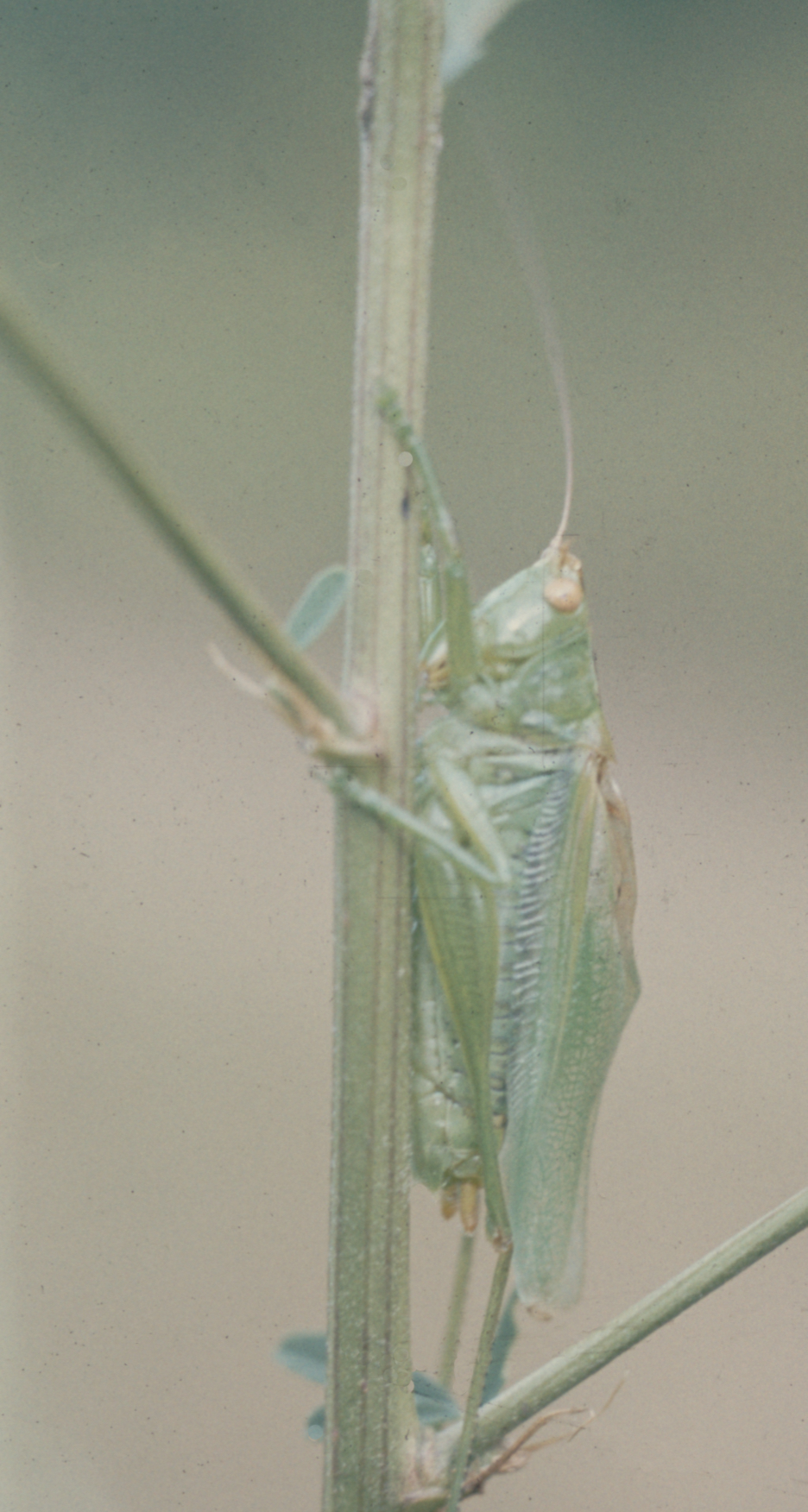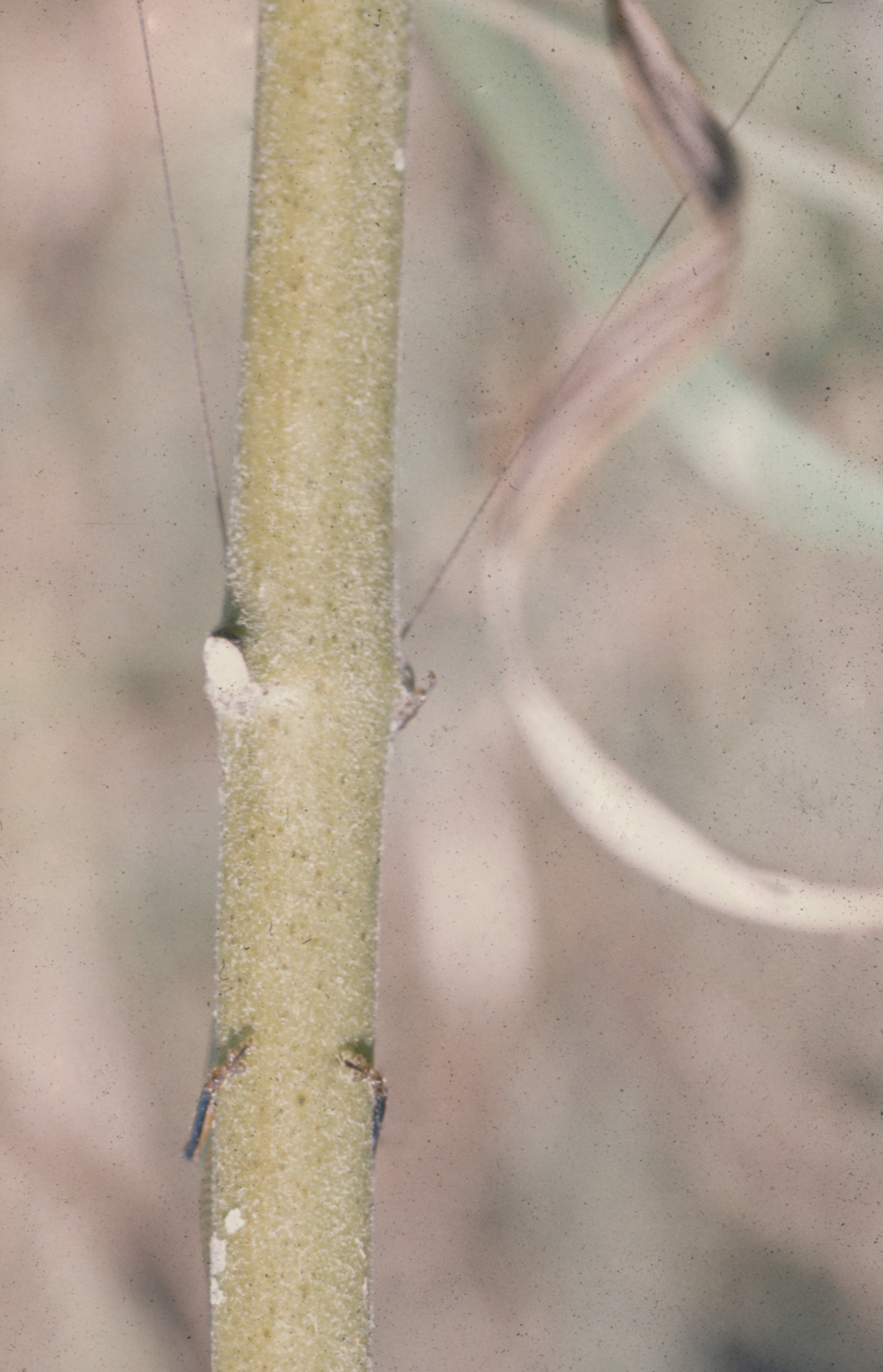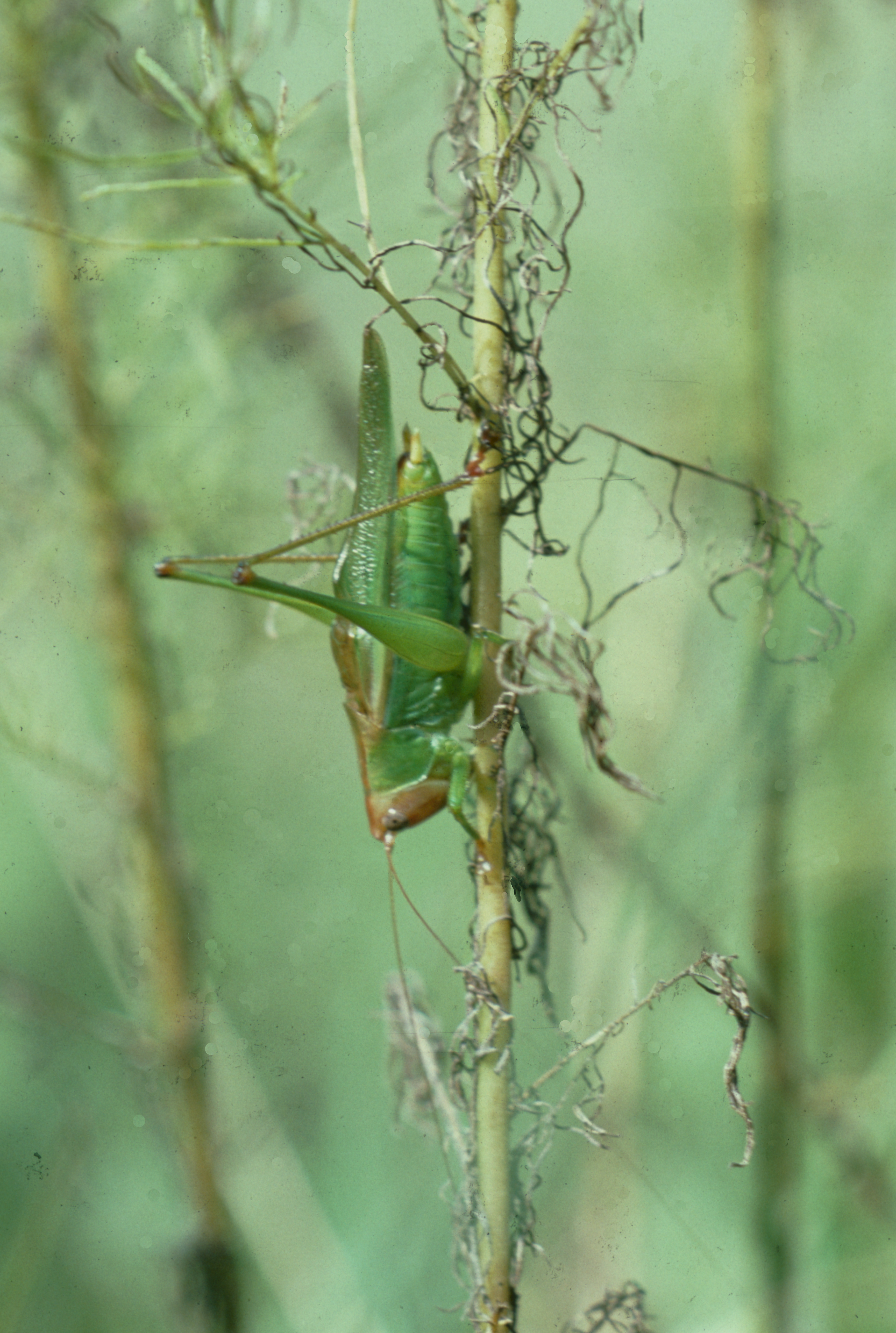Orchelimum is a genus of conocephaline katydids confined to North America; there are 20 species. They are larger, more robust forms of the huge worldwide genus Conocephalus. Below a male of Orchelimum gladiator clings to a stem to stridulate (Fig. 1). I did my doctoral thesis on Orchelimum gladiator and discovered that these insects engage in grappling fights Morris . Speaker playback of a male conspecific's calling evokes phonotactic approach in suitably motivated neighbouring males.
[The events of the day I first saw a fight between O. gladiator males including the NY state trooper in pursuit of an escaping state truck.] That this species, whose name arose as descriptive of the female's swordlike ovipositor, should practice overt aggression should be
 In the summer of 1968 Tom Walker of the University of Florida helped me to find and identify species of Orchelimum. With my father (Jack Morris) and Tom K. Wood (Membracid entomologist) we drove about the Florida peninsula in June. It was typical June Florida, hot and sunny, a concern to maintaining the captured insects; we needed ice and a cooler. Cloudbursts were not uncommon in the afternoons, rain strong enough to halt traffic. Motels were always 6-9 $ a night. Collecting technique involved waders and a large net and a dextrous swipe. We shipped these insects alive back to Toronto as air cargo for later recording and analysis. Keeping them alive in screen-folded cages and feeding them cut apple pieces.
In the summer of 1968 Tom Walker of the University of Florida helped me to find and identify species of Orchelimum. With my father (Jack Morris) and Tom K. Wood (Membracid entomologist) we drove about the Florida peninsula in June. It was typical June Florida, hot and sunny, a concern to maintaining the captured insects; we needed ice and a cooler. Cloudbursts were not uncommon in the afternoons, rain strong enough to halt traffic. Motels were always 6-9 $ a night. Collecting technique involved waders and a large net and a dextrous swipe. We shipped these insects alive back to Toronto as air cargo for later recording and analysis. Keeping them alive in screen-folded cages and feeding them cut apple pieces.
The calling songs of Orchelimum are made by males using a file on the underside of the left tegmen (see drawing right), a transverse anal wing vein lined below by teeth is engaged by an upturned lobe --scraper -- of the right tegmen. The song of each species is different in the time domain, less so in the frequency domain (spectrum).

 The largest species of Orchelimum is O. erythrocephalum. Its song is a short buzz preceded by a loud smack. Right is a photo of a male in vegetation beside a Florida highway. Left is a male of Orchelimum nigripes illustrating the hiding behaviour characteristic of an Orchelimum spp. Sidles to keep the perch stem intervening between him and the disturbing stimulus. The long antennae give him away.
The largest species of Orchelimum is O. erythrocephalum. Its song is a short buzz preceded by a loud smack. Right is a photo of a male in vegetation beside a Florida highway. Left is a male of Orchelimum nigripes illustrating the hiding behaviour characteristic of an Orchelimum spp. Sidles to keep the perch stem intervening between him and the disturbing stimulus. The long antennae give him away.
